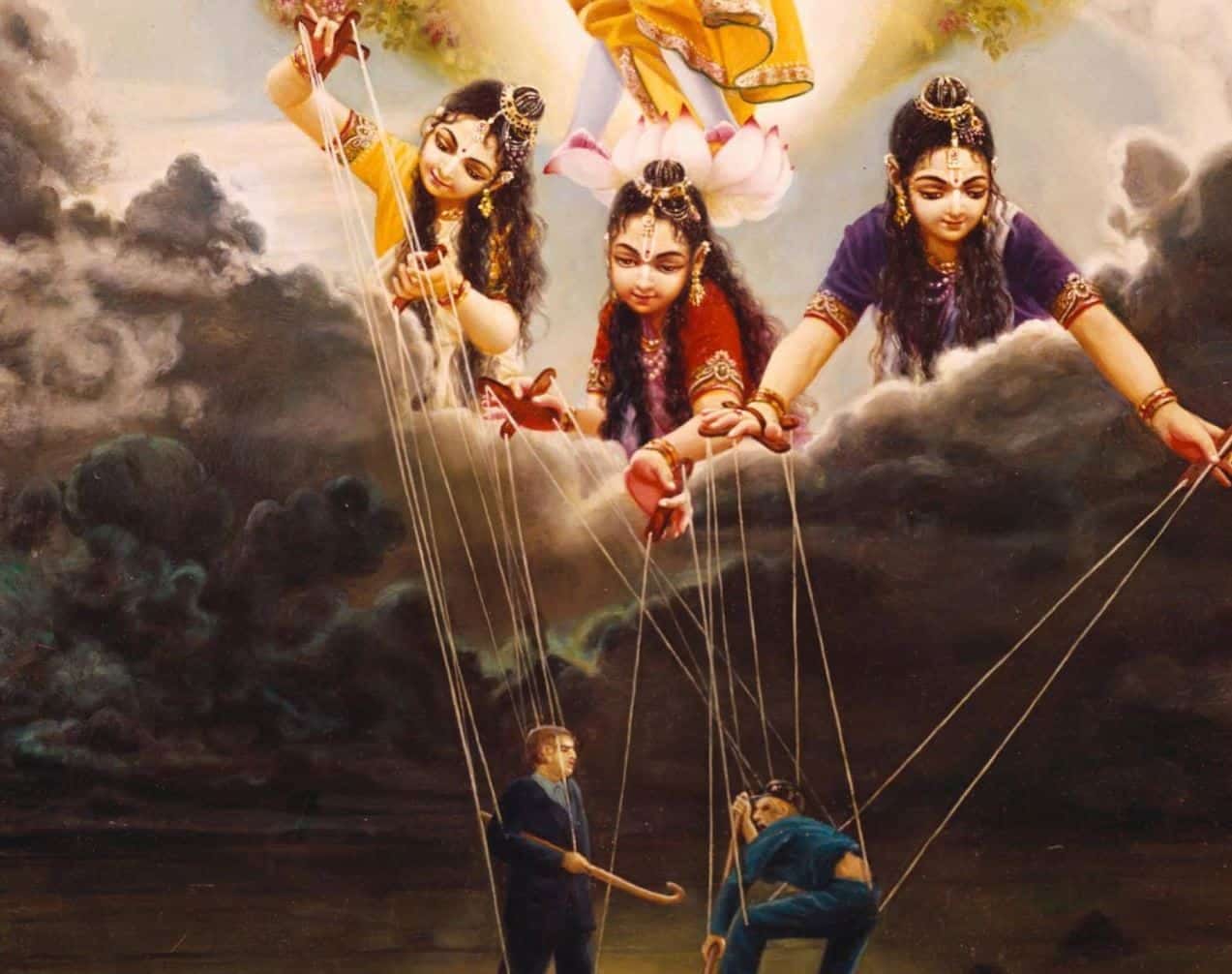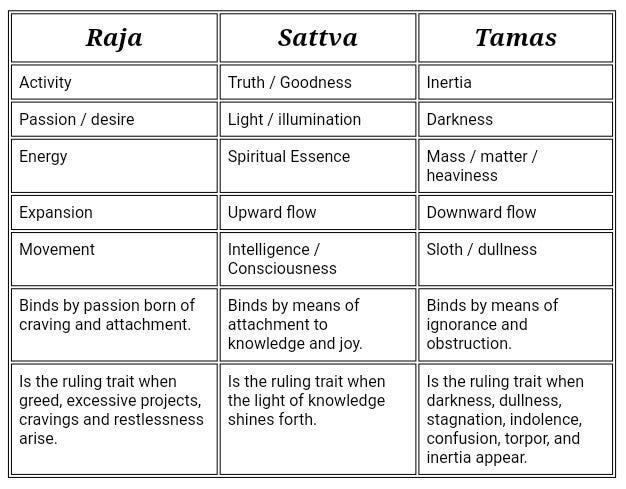Guna Control
How Hindu philosophy can be used to lift yourself from a sh#tty mood and perspective on life.
I’ve been experiencing what the DSM might diagnose as “low-level depression” lately. It started a couple weeks ago, after I finished writing a thought leadership piece for a real estate tech journal. The piece was part of a campaign to rebuild my professional reputation, which was mangled by a three year cavalcade of breakdowns, setbacks, and pauses. I was going to demonstrate my authority in that piece and a separate podcast interview, using them as marketing tools for my consulting services and fundraising for my startup, Run Haus. Instead, the pieces didn’t get published (yet), I got a cold, a new dental issue, some bad legal news, and shitty weather.
While none of my problems were (or are) horrible as horrible as horrible problems can be (read: starving while being fired upon by fighter jets), they were bad enough to diminish momentum on things that were difficult to keep moving in the first place. Commercial and media landscapes continue to actively promote a fatter, stupider, more wasteful and disconnected society, and I’ve committed myself to the opposite. My connection to a higher purpose and power —definitely not money, sex, or fame—is what keeps me moving. That power is easier to feel when I’m running up mountains or cranking out coherent prose , but far harder laid up in bed watching Office and South Park reruns.
I accept wavering faith is a function of faith. I accept downtimes are inevitable, and there were a few days last week when it felt great doing nothing …last week. Today, it’s harder to accept not feeling good when it’s primarily my thoughts standing in the way.

Years ago, I took a survey class of spiritual principles at The School of Practical Philosophy in Manhattan. By far the most lasting lesson taught there concerned the three gunas, which in Hindu philosophy represent the three main states of existence. The gunas are as follows:
Tomas: a state characterized by ignorance, inertia, and laziness.
Rajas: a state characterized by passion, activity, and movement.
Sattwa: a state characterized by goodness, calmness, and harmony.
I’ve known all of these states firsthand, and seen how people gravitate towards one guna, becoming the lazy ass, busybody, or trusted counsel, depending on one’s karmic disposition. What the class added was a directionality of balancing the states. I often struggled between tamas and sattwa —between inertia and harmony —and often tried to think enlightened thoughts (e.g. reading inspirational quotes) to pull me from my tamas rut. The class taught me how activity (rajas) was the gateway to higher state. Said more simply elsewhere, “you can’t think your way into right action, you must act your way into right thinking.”
Writing and running are my rajas infrastructure, ensuring an opportunity to “do something” each day when the drag of tamas wants me to give up on lofty pursuits. Whether a run or newsletter, my ability to start and finish things —any “thing”—challenges fixed views of my life, which is the first step away from crappy thought cycles and a step towards wisdom and peace.




